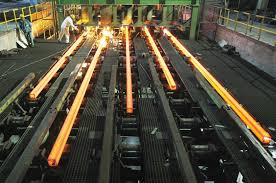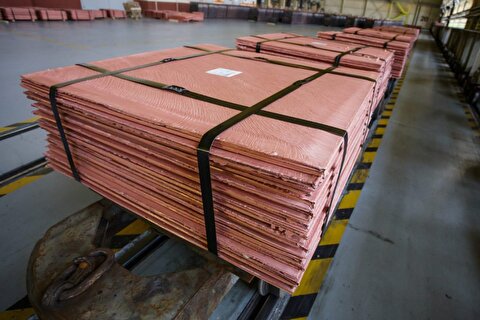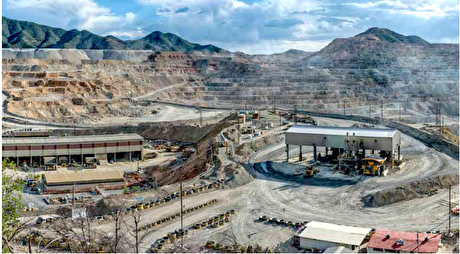
What does June 2019 have in Store for Global Steel Market?

On the other hand, ferrous scrap prices have been falling due to the ongoing trade war between U.S. and China, rising trade protectionism that has resulted in subdued buying interests. Turkey which is the world’s largest scrap buyer and imports majorly from U.S. is not buying the same partly in retaliation over U.S. trade actions.
With falling scrap prices, sellers are destocking their inventories and it is likely that the prolonged destocking by mills will exert more downward pressure on its prices. However, in case of iron ore it is likely its supplies may improve with the rise in iron ore production and shipments in Brazil and Australia which will ultimately help in lowering down its prices.
The struggle of poor steel demand to continue in U.S. and Europe
The intensifying trade war between U.S. and China that started last year has adversely affected the global steel industry and the situation is not likely to see any major change in the month of June.
The steel producing nations are churning out steel keep their domestic industry going but two major steel consuming countries, Europe and U.S. are facing tepid domestic demand and with this, no major change will be seen in the two countries’ consumption pattern in the month of June.
United States: The steel prices in U.S. already plunging and with U.S. removing import restrictions on steel imports from Canada and Mexico and halving duties to 25% on imports from Turkey has created a panic of rise in imports in U.S. once again. In addition, the softening of ferrous scrap prices has created expectations for further decreases and has influenced buyers to delay their new purchases.
Europe: In Europe, the current quota system is helping to keep steel prices stable in many markets, but the safeguard measures have not brought the expected benefit for EU mills. Too many cargoes arrived at the start of the season in February and April and clients have filled their stockyards. Subsequently, mills had to reduce their prices to collect new orders. Now, however, the next wave of imports is expected to arrive in July, which will probably cover a good portion of the demand for the summer period.
To tackle this situation, the steel mills shall adjust and reposition themselves based on the situation outlined above. The current alternatives are either to push more steel into the domestic and regional markets and thereby, of course, end up putting downward pressure on prices, or, on the other hand, to stop production. In the case of ferrous scrap, many scrap smelters around the world have already decided that less could be better. Meanwhile, ArcelorMittal Europe is the only blast furnace-based producer that has announced cutbacks in production in order to increase prices, and this seems to have worked for now.
China will continue to pump more steel
Although China is facing tepid domestic demand, it will continue to churn out more steel and is expected to touch one billion marks by the end of 2019. However, its exports will remain muted due to increase in trade barriers. The month of June will not see any major decline in daily crude steel output of the country and is, in fact, is expected to increase M-o-M basis.
The future looks unstable
The trade barriers and the tariff picture for the second half of this year are quite uncertain, far outweighing any uncertainty in demand, supply, and competition. Margins for steel producers are approaching painful levels.
The key area of concern is that the capacity utilization of steel units has been decreasing in 2019 in many regions. Apart from this, the political reasons such as elections from Istanbul to Jerusalem, the G20 meeting in Tokyo, the US-China trade meltdown, and crude oil crises linked to Venezuela and Iran are contributing to uncertainty in the global market.
Under the current circumstances, the steel market can be described as fluctuating and unstable. The outlook is very much uncertain, less predictable and weaker. However, it is anticipated that situation might improve during the summer season which starts from the end of June month due to industrial vacation period in some part of the world which will balance out the demand-supply imbalance a bit.



Gold price eases after Trump downplays clash with Fed chair Powell

Copper price hits new record as tariff deadline looms

Brazil producers look to halt pig iron output as US tariff threat crimps demand

Chile’s 2025 vote puts mining sector’s future on the line

Gold price could hit $4,000 by year-end, says Fidelity

Three workers rescued after 60 hours trapped in Canada mine

US targets mine waste to boost local critical minerals supply

Glencore workers brace for layoffs on looming Mount Isa shutdown

Energy Fuels surges to 3-year high as it begins heavy rare earth production

Trump tariff surprise triggers implosion of massive copper trade

Maxus expands land holdings at Quarry antimony project in British Columbia

BHP, Vale accused of ‘cheating’ UK law firm out of $1.7 billion in fees

Southern Copper eyes $10.2B Mexico investment pending talks

American Tungsten gets site remediation plan approved for Ima mine in Idaho

Kinross divests entire 12% stake in Yukon-focused White Gold

Gold price could hit $4,000 by year-end, says Fidelity

Southern Copper expects turmoil from US-China trade war to hit copper

Ramaco Resources secures five year permit for Brook rare earth mine in Wyoming

Column: EU’s pledge for $250 billion of US energy imports is delusional

Trump tariff surprise triggers implosion of massive copper trade

Maxus expands land holdings at Quarry antimony project in British Columbia

BHP, Vale accused of ‘cheating’ UK law firm out of $1.7 billion in fees

Southern Copper eyes $10.2B Mexico investment pending talks

American Tungsten gets site remediation plan approved for Ima mine in Idaho

Kinross divests entire 12% stake in Yukon-focused White Gold

Gold price could hit $4,000 by year-end, says Fidelity

Southern Copper expects turmoil from US-China trade war to hit copper

Ramaco Resources secures five year permit for Brook rare earth mine in Wyoming














